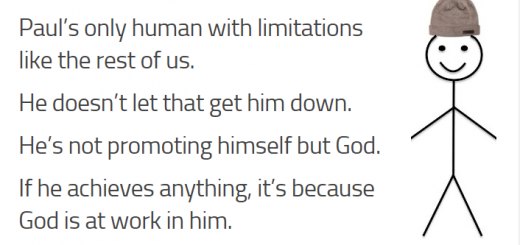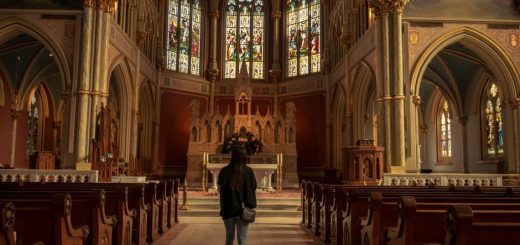The Letter to the Hebrews: four radical words
I imagine you’re getting a sense right now of the passion I have for the Letter to the Hebrews. The four words that we are going to explore today are, in my opinion, four of the most radical and exciting words in the whole of human history.
Let us draw near.
Really? Draw near to the one true God? How is that even possible? Think of all those stories of those individuals who disrespected God and paid the price – mostly with their own life! God is pure and perfect and holy and therefore completely unapproachable by mere mortals like us, right?
Let’s have a look at how I tackled this revolutionary concept in the essay I wrote for my Living Theology Today course in 2008.
The second theological insight that I wish to discuss is the approachability of God, a central theme in the Book of Hebrews. In fact, William Barclay says “If the writer to the Hebrews had one text and one summons, it was ‘Let us draw near’.”
Religion can be seen as the yearning to gain access to God, searching for that which brings us ever closer to and that which removes barriers and opens doors to the very presence of God. The nature of God longs to draw humanity into an intimate relationship with himself and He will go to staggering lengths to establish that relationship. However, throughout the Hebrew Scriptures, we see a God who is to be feared and approached with reverence. After the separation from God brought about by the Fall, only a few were noted as having a relationship with God. Abel, mentioned in Hebrews 11, sought renewed intimacy with God by bringing the best that he had (11v4); Enoch was rewarded for his walk with God by never passing through death (11v5); and Moses was strengthened for each task by spending time in the presence of God.
But for the Jewish people, entering the presence of God was something of awe. God could not be approached: only He could approach man and He did so through the covenant that He made with Abraham and confirmed with Moses, the priests and the elders in Exodus 24. He invites them into his presence and even then “Moses alone is to approach the Lord; the others must not come near.” (Exodus 24:2)
The elaborate structure and rituals of the tabernacle were established to place a distance between the people and the Most Holy God. Obedience in every detail and at all times was what God required of His people and what they wanted to show in a desire to stand within His covenant. However, total obedience proved impossible and access to God had to come through the sacrificial systems that God established with the priests as mediators for the people. And so it continued, day after day, year after year….the people of Israel falling short and atoning through sacrifice.
Then came Jesus. He led a life of perfect obedience to God culminating in the perfect sacrifice, his own blood shed for all on the cross. And at the moment that he died, the veil in the temple was rent in two, the curtain that separated God from man was symbolically torn wide open. Furthermore, Jesus’ flesh can be seen as that which veiled his divinity and “As the rending of the tabernacle veil opened the way to the presence of God, so the rending of the flesh of Christ revealed the full greatness of the love of God.”
So the writer to the Hebrews can exhort his recipients, who would all be familiar with the priestly practices of the day, to approach God in a culmination of all that has gone before –
“Therefore, brothers, since we have confidence to enter the Most Holy Place by the blood of Jesus, by a new and living way opened for us through the curtain, that is, his body, and since we have a great high priest over the house of God, let us draw near…” Hebrews 10:19-22This would have been extremely difficult for the Jewish people to accept. God had already set up a system for how to approach him; this was a ‘new and living way’. Their confidence was based in their level of obedience and sacrifice; now their confidence had to be placed in Jesus alone. The priests mediated between God and man; now there was a new high priest. The angels had become accepted as intermediaries between the people and a God who felt ever farther away; Jesus was shown to be superior to all the angels. From The Letter to the Hebrews: an evaluative outline of the key themes and theological insights by Helen Redfern
Let us draw near.
This is the beautiful invitation, the call to respond, given to all.












